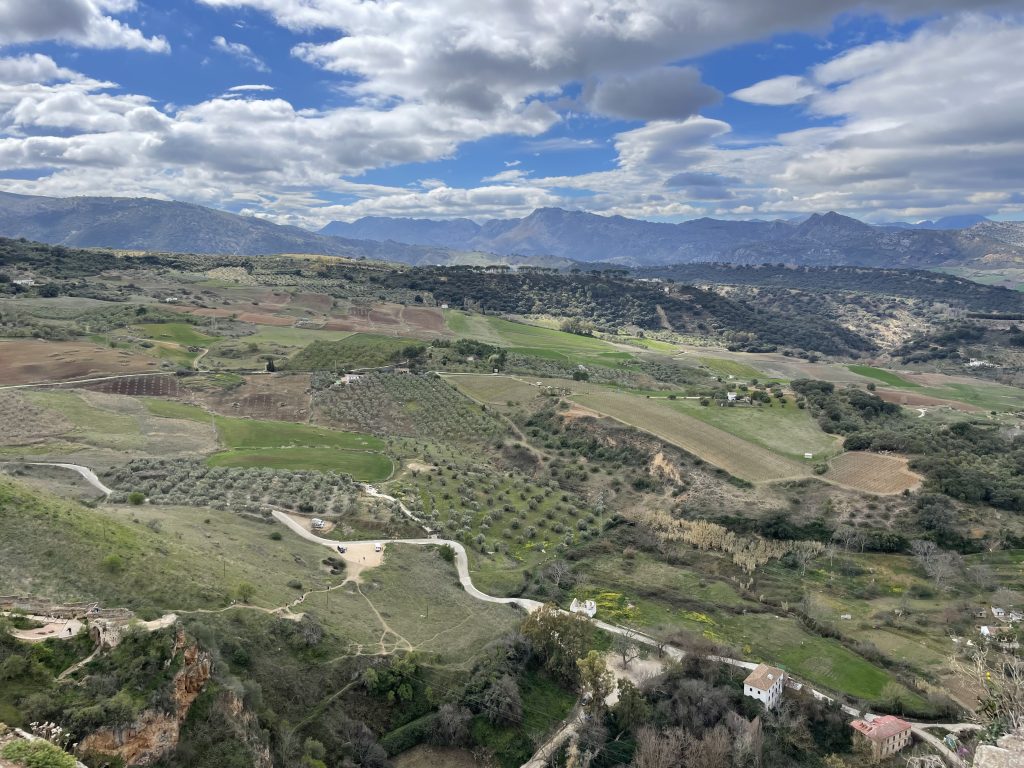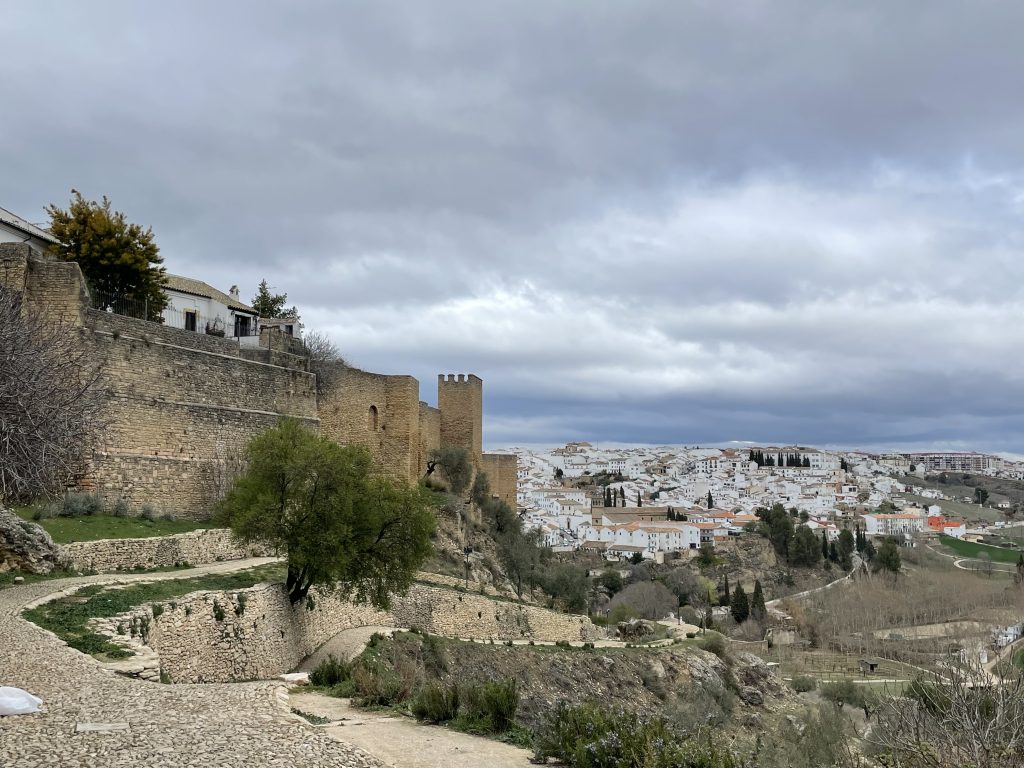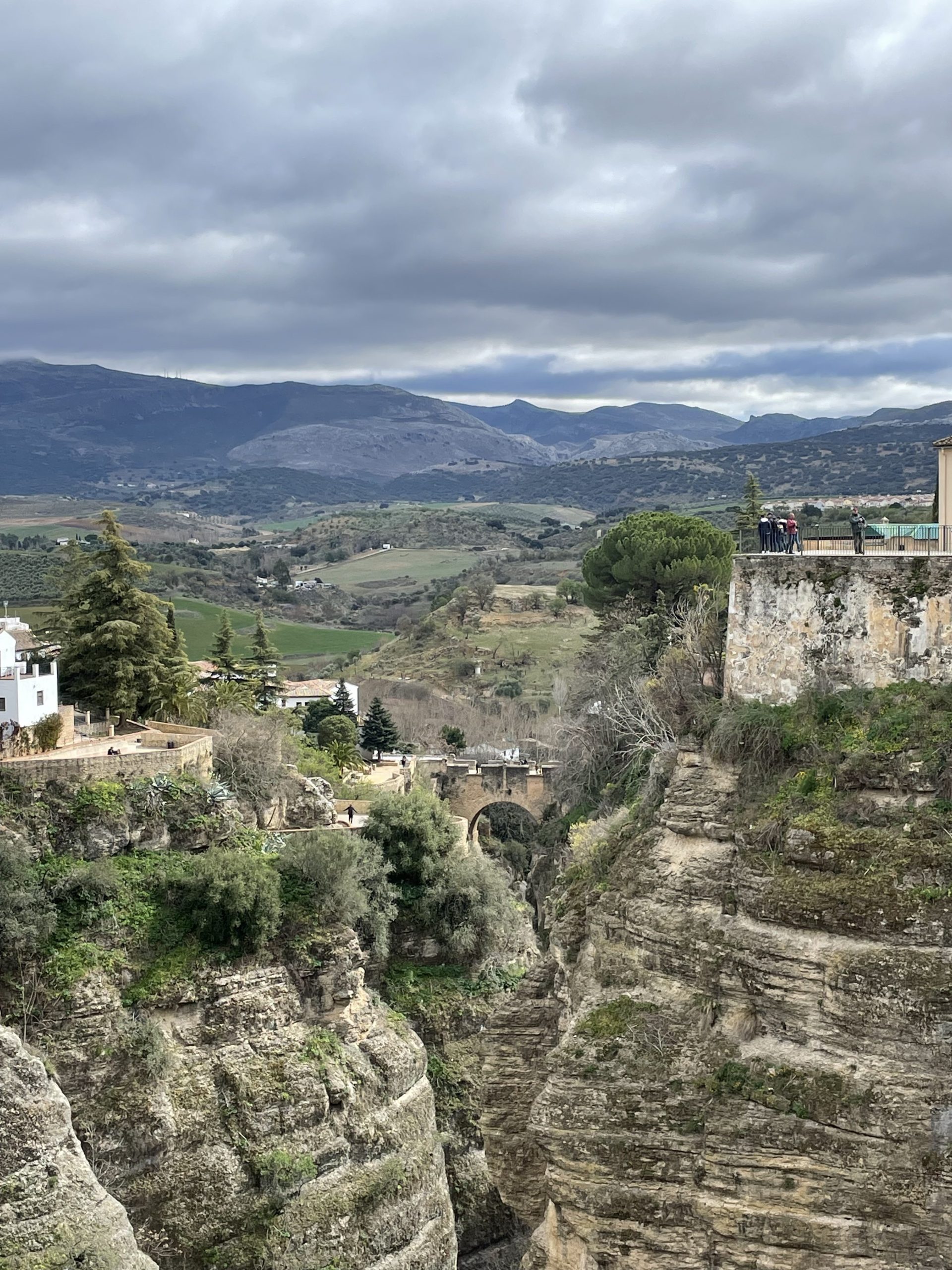Sitting astride a steep steep gorge, Ronda is a town to look out from rather than at. The Puente Nuevo, new bridge, was built in the late 18th century and links the ‘old’ and ‘new’ parts of the town over the dramatic gorge which the Rio Guardalevin has made; it is so deep you cannot see the bottom of the bridge. The buildings on both sides of the gorge have balconies and patios from where visitors crane their necks, or even stand on the walls to get a better photo than the next person, with sheer drops hundreds of metres to the bottom of the ravine.
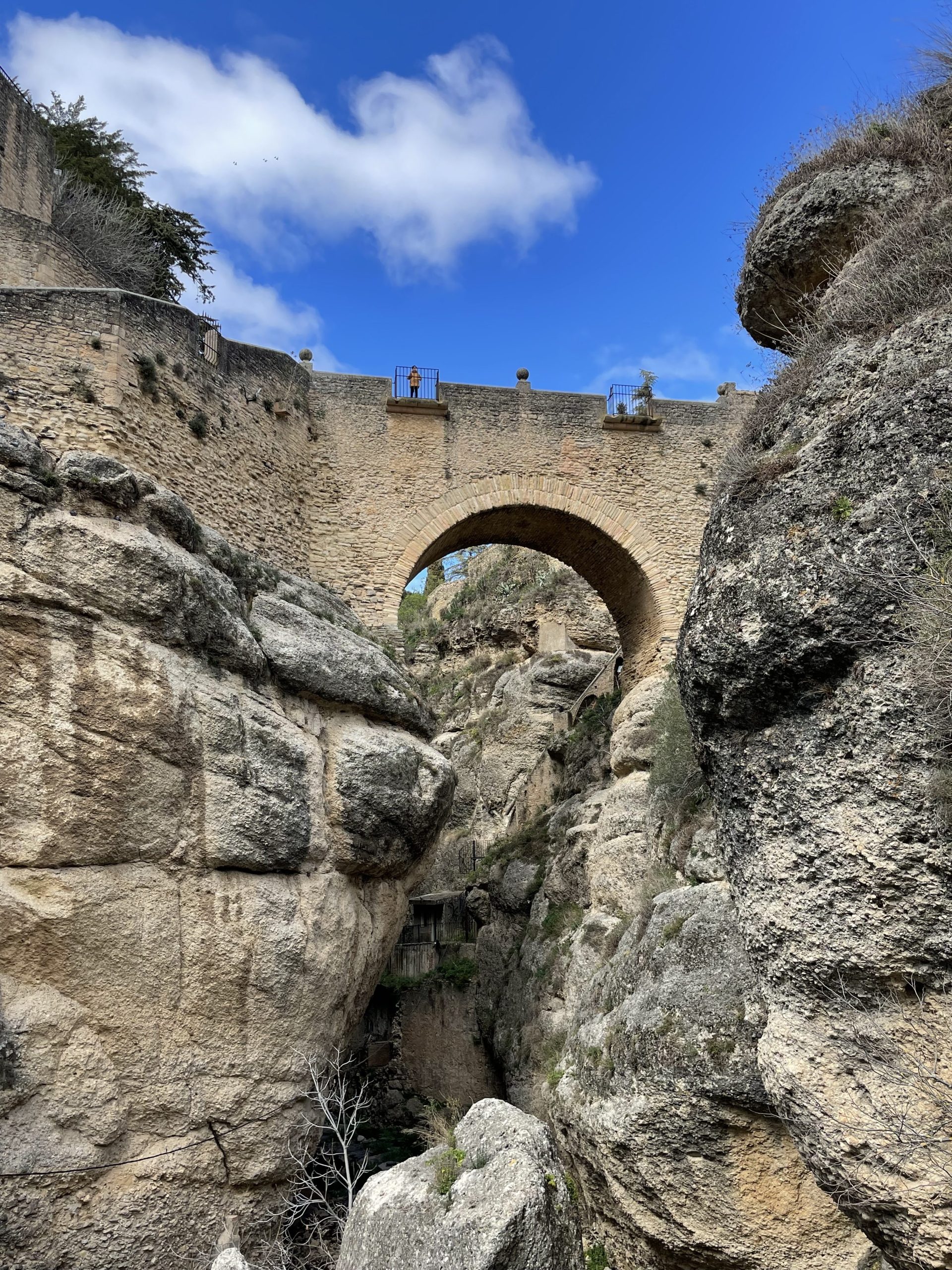
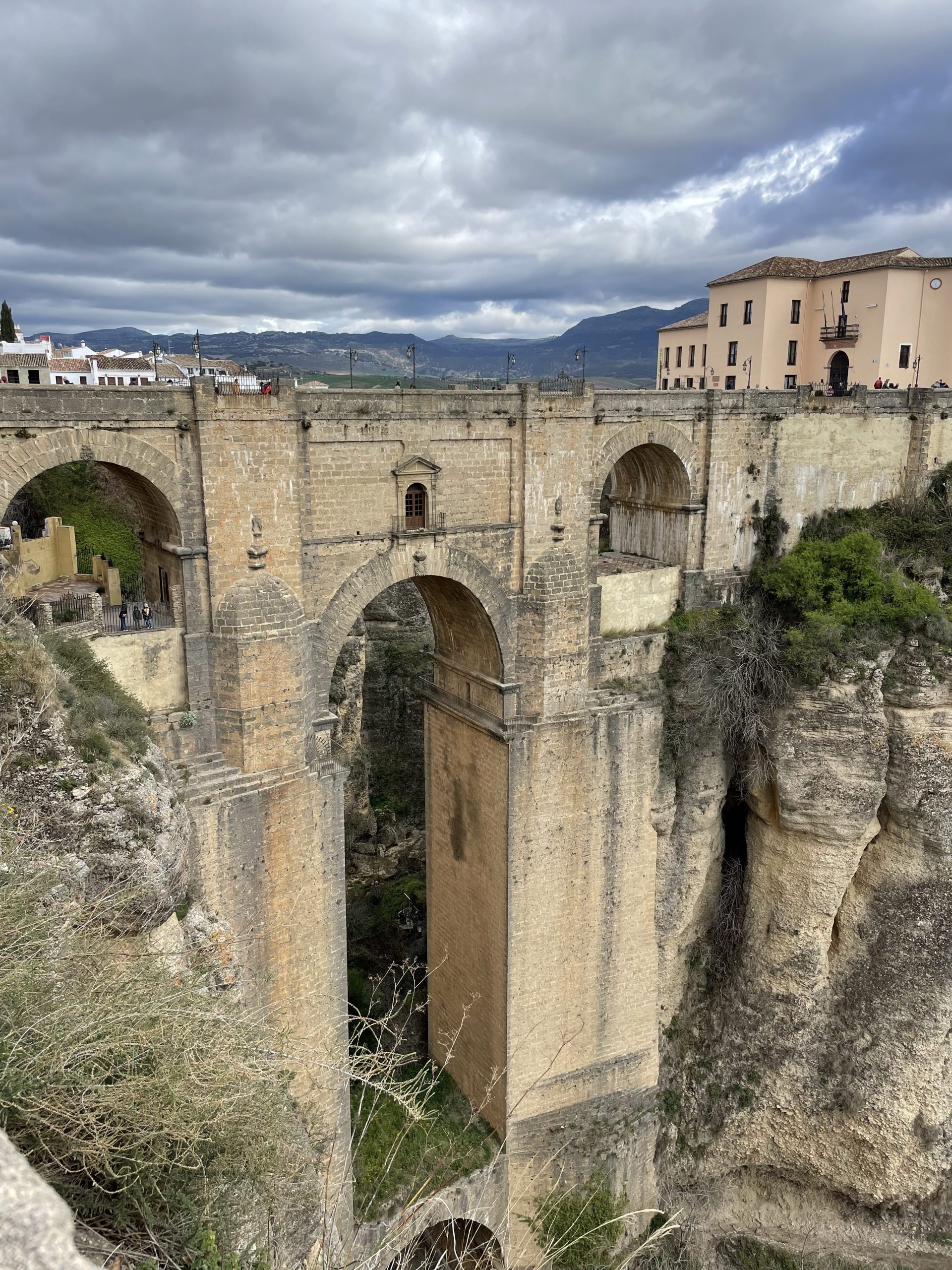
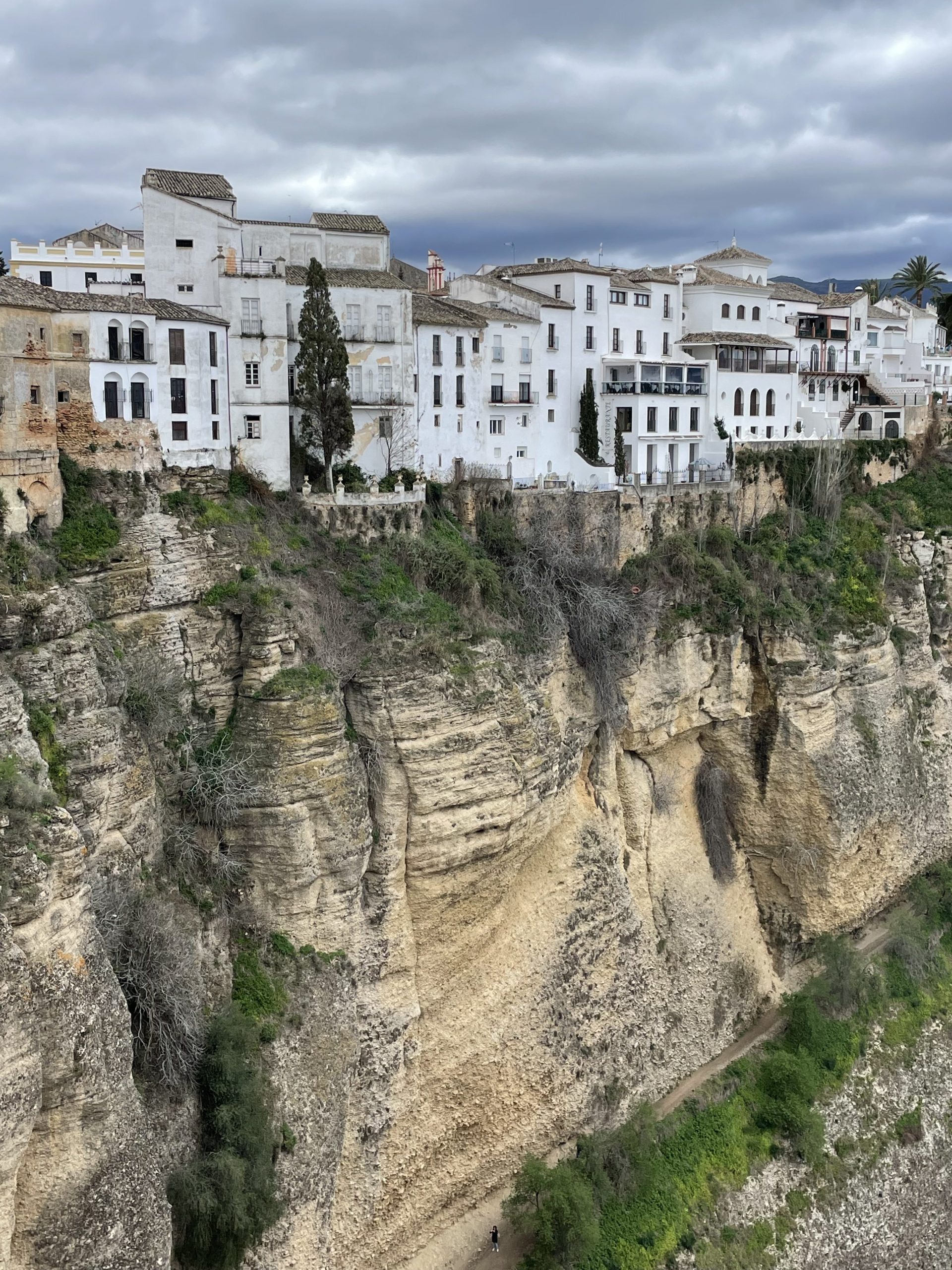
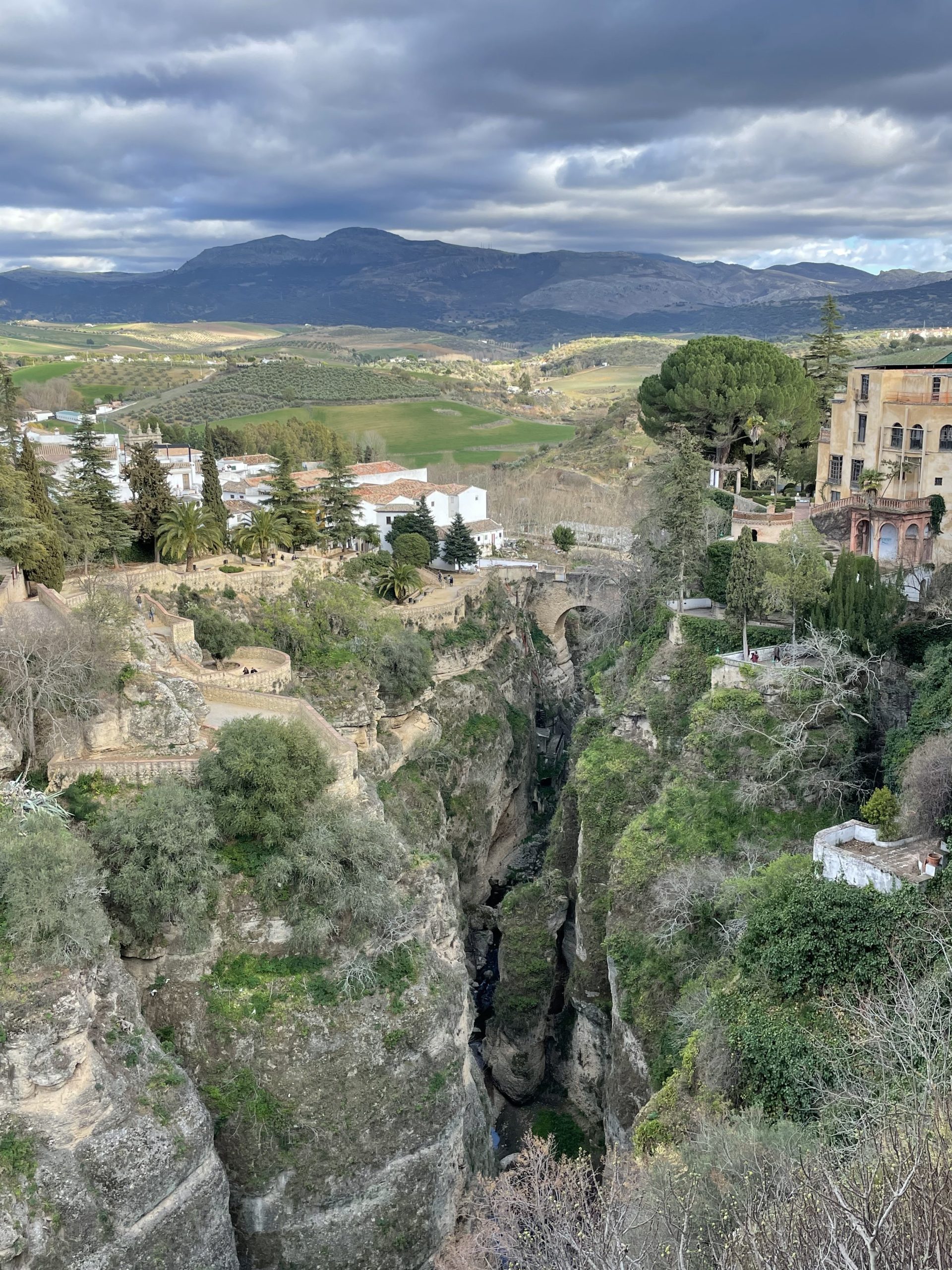
Hemingway is purported to have used this scene at the Plaza de Espana at Ronda to describe the murders during the Spanish Civil War, 1936-1939, of local Fascists in For Whom the Bells Tolls, where they were forced out of the Town Hall and beaten and thrown over the precipice into the gorge. The Town Hall is now the Parador Hotel where we had coffee and cakes with a cold shudder down the spine.
The following is a detailed debate of this:
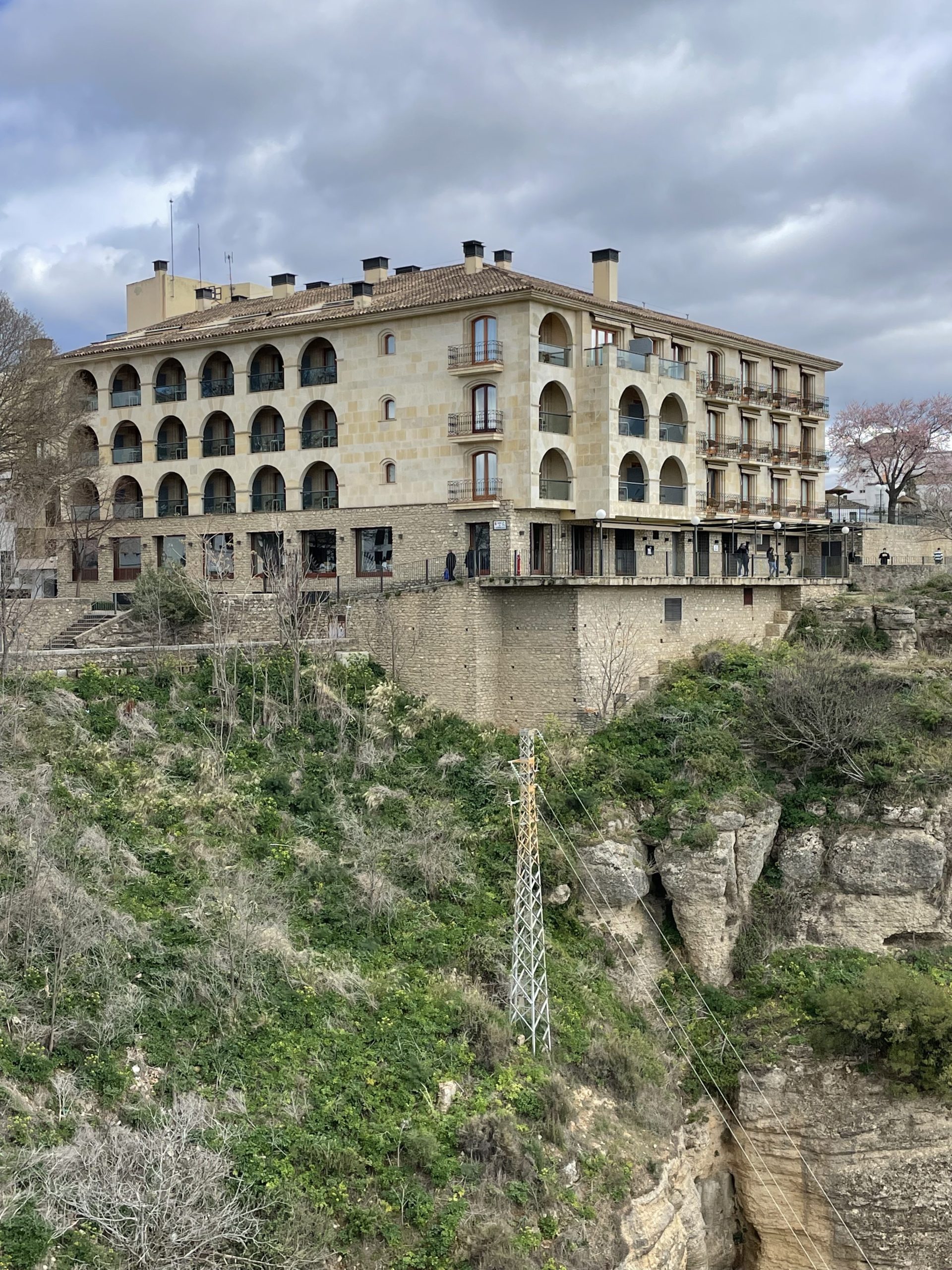
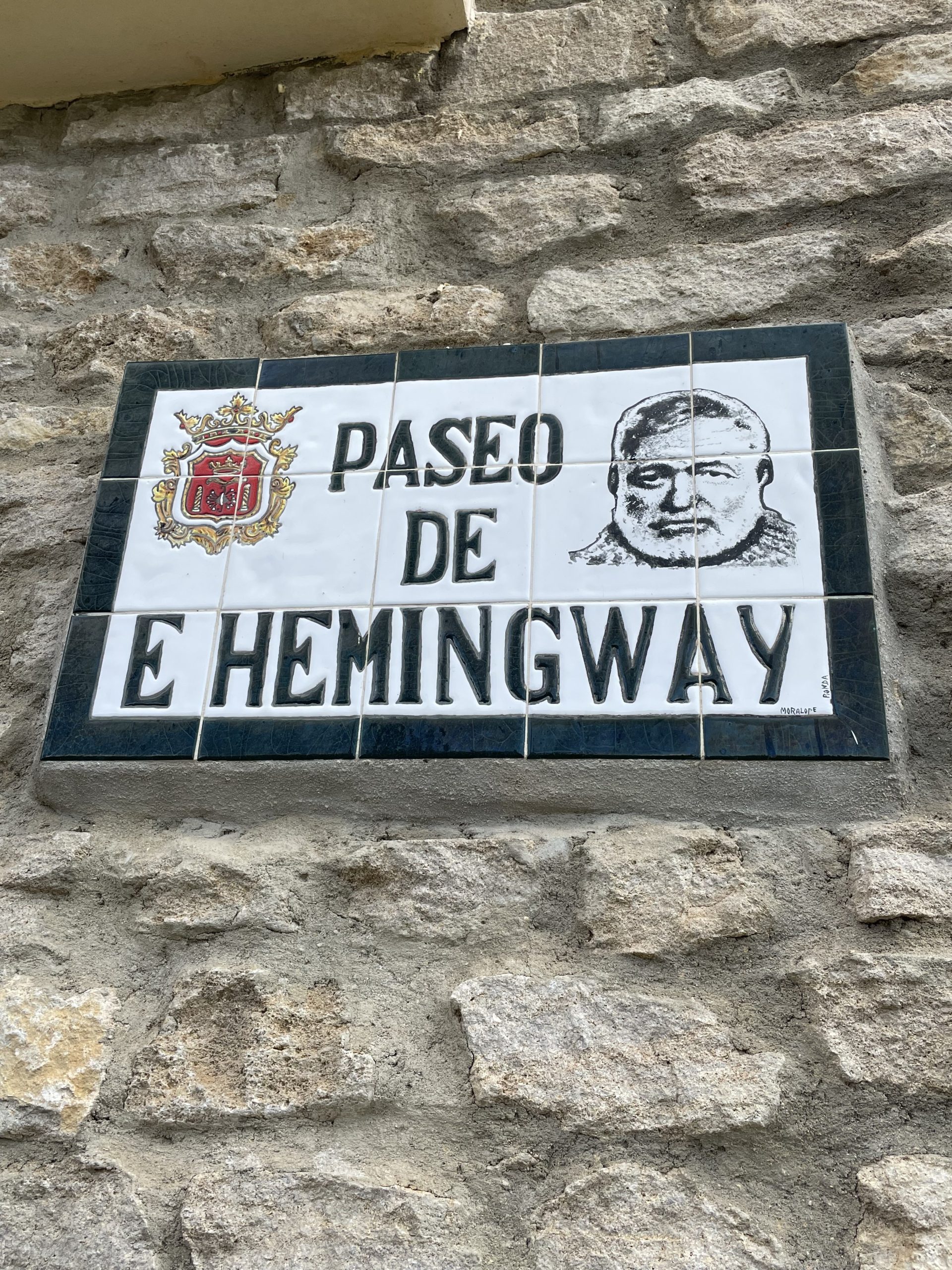
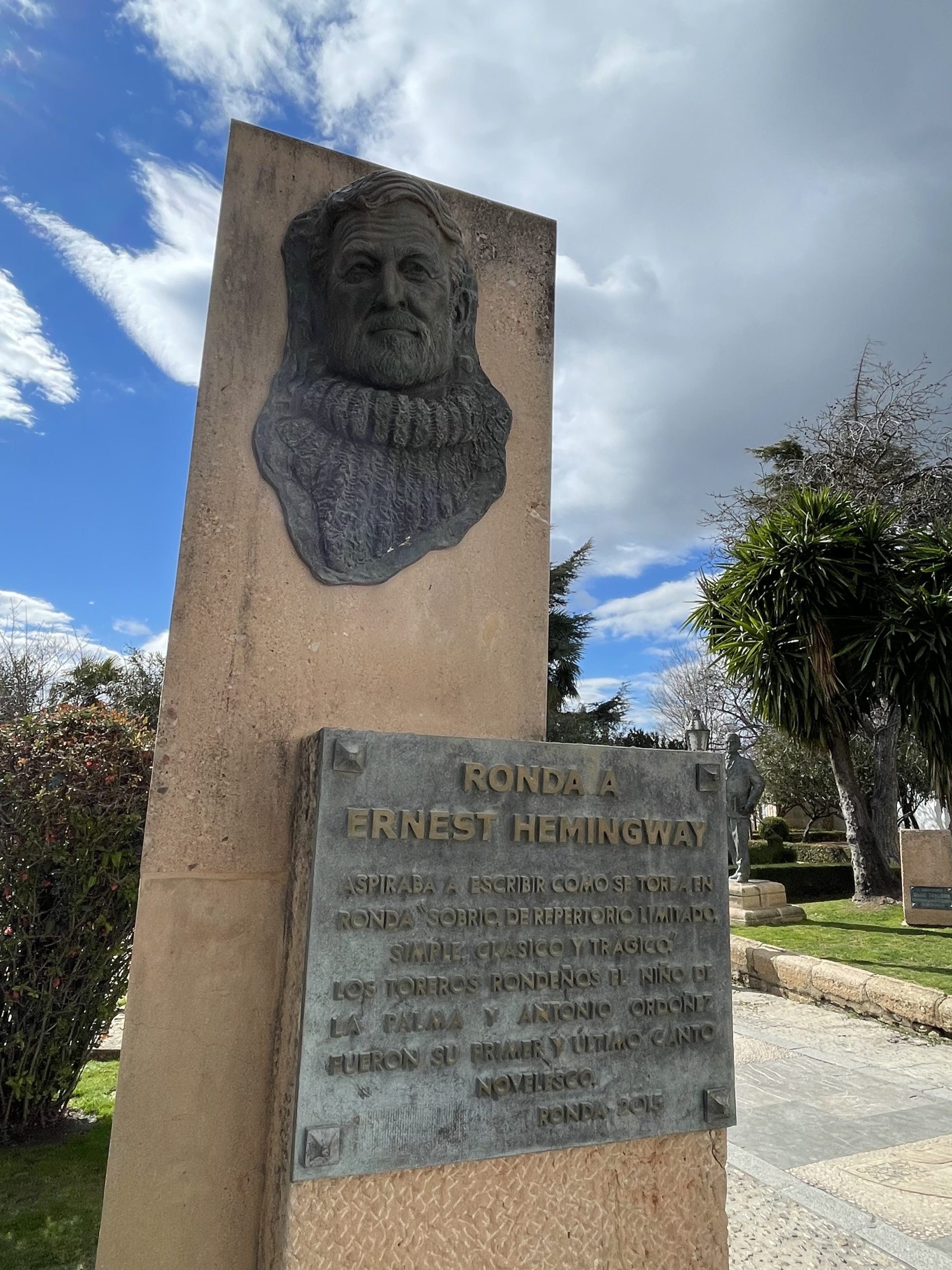
Ronda is the home of the largest and oldest bull ring in Spain, which may be why Hemingway and Orson Wells spent time here, they loved a bull fight. It looks like this one got away, hurray!
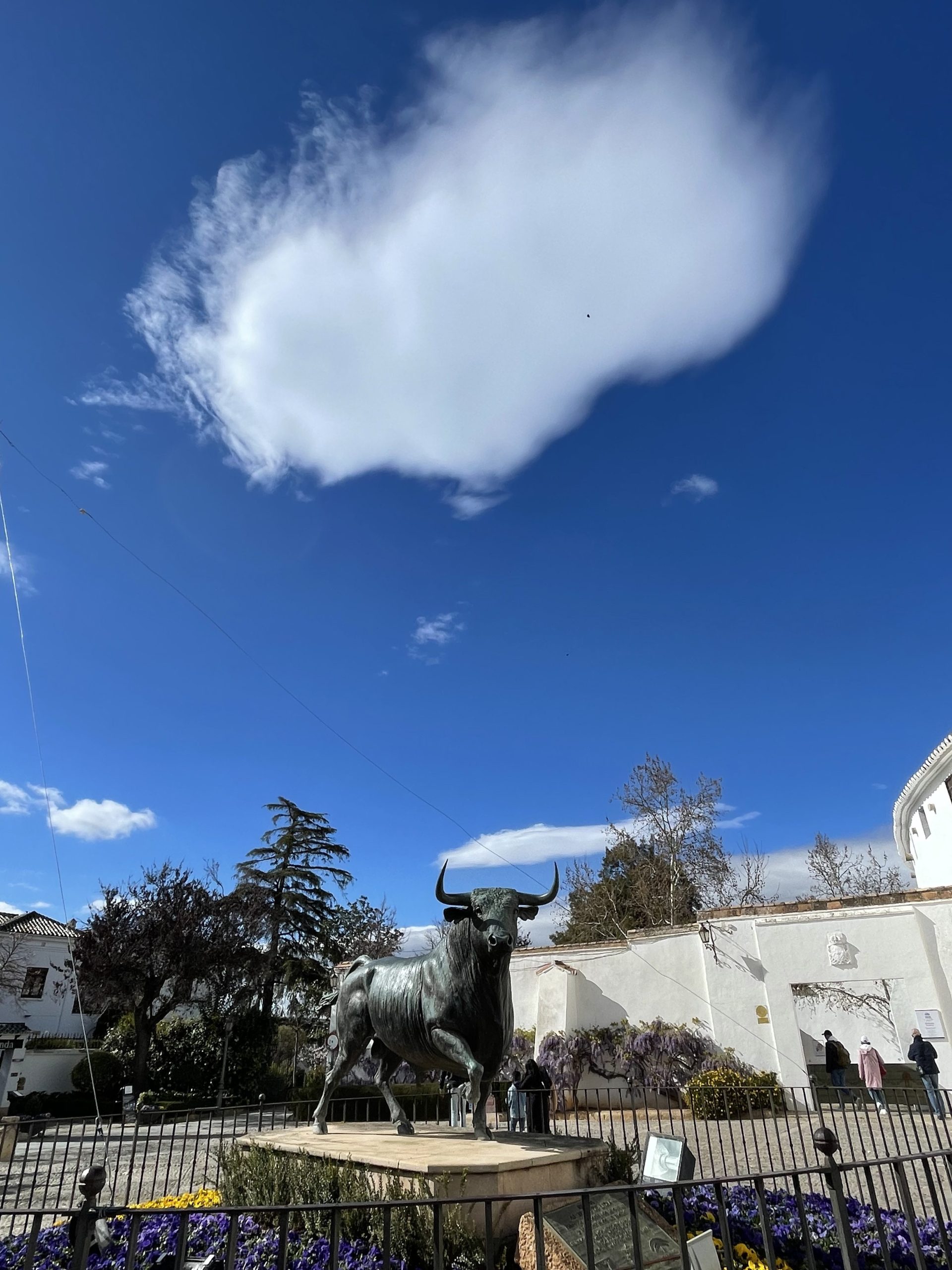
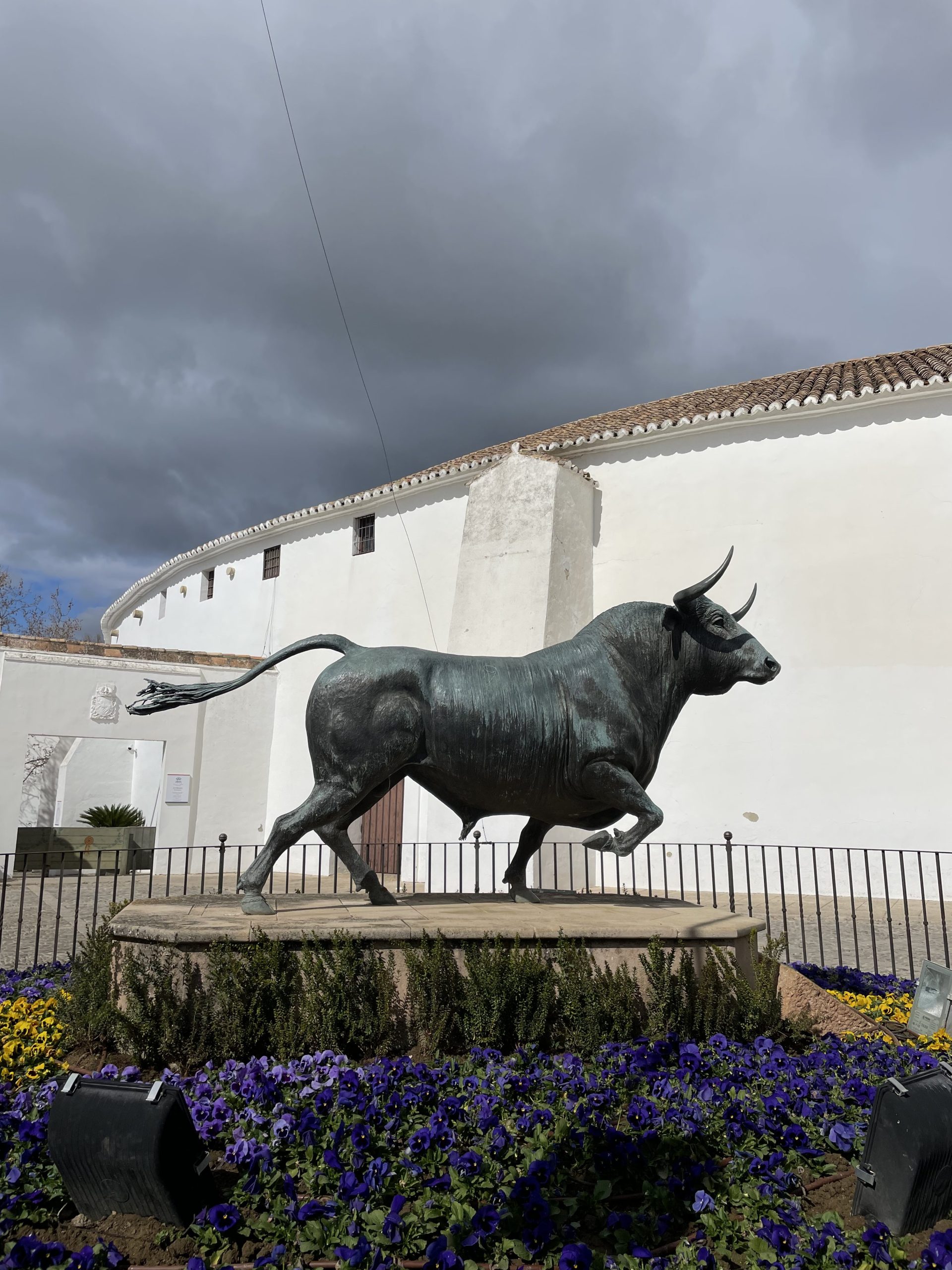
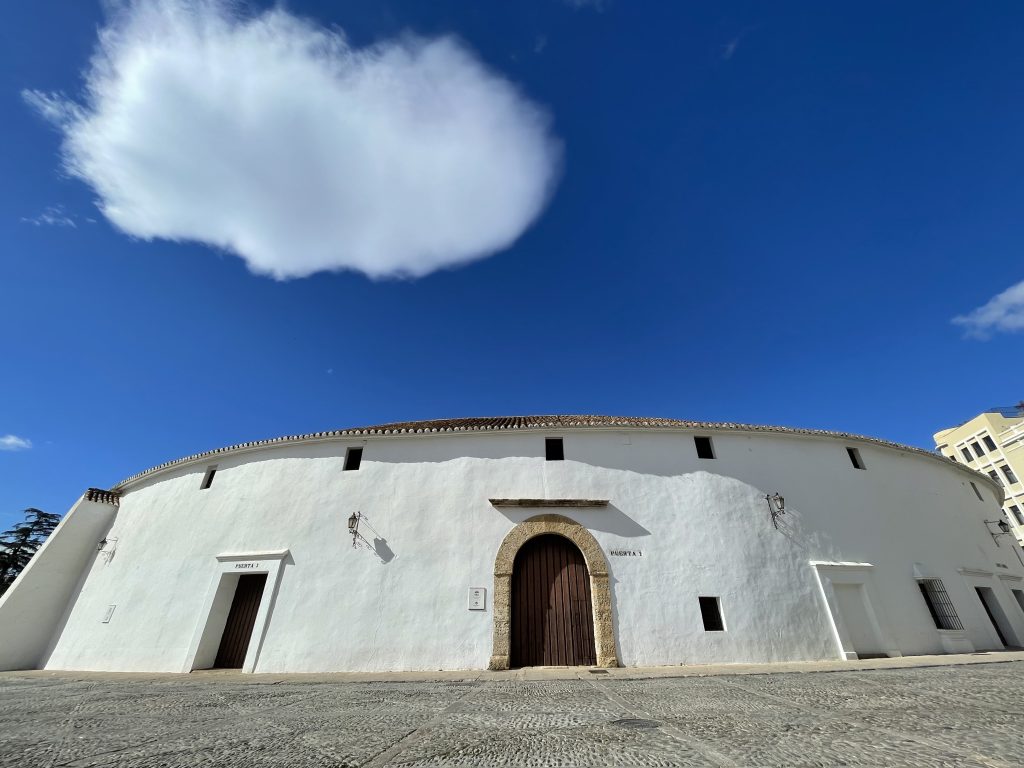
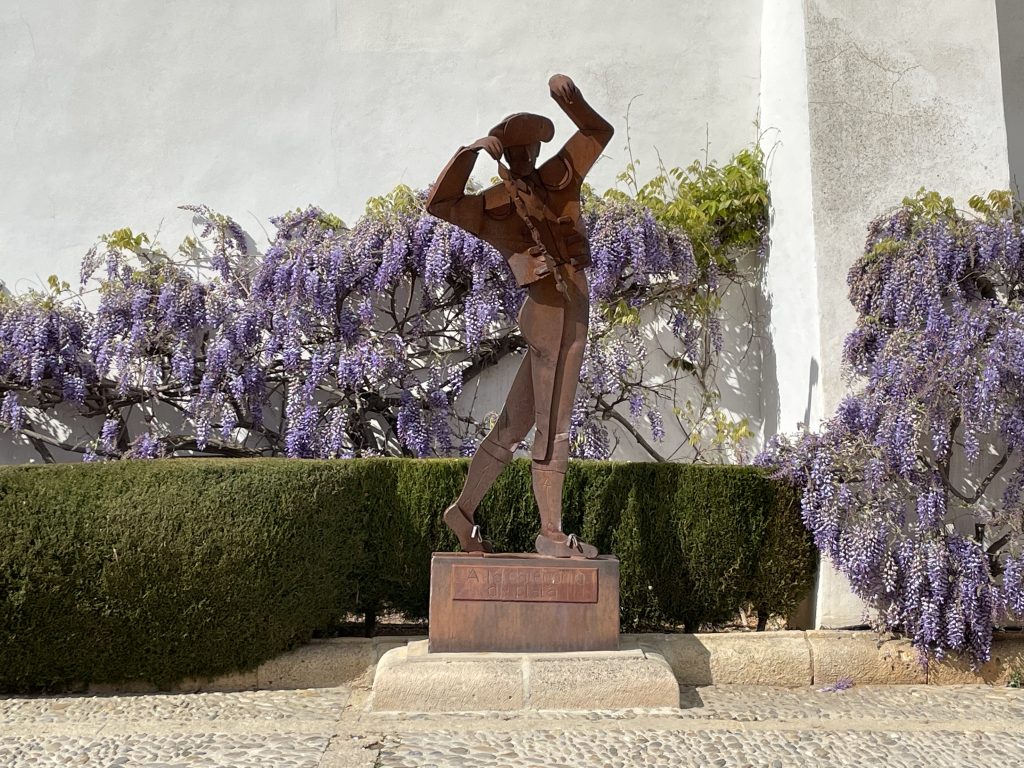
There is also a statue of Blas Enfante 1885 – 1936, the social reformist who made a seat in Ronda for Andaculian nationalism, and who designed the Andalucian flag of green and white stripes. He was executed by Franco’s forces when they took over Seville at the beginning of the Civil War.
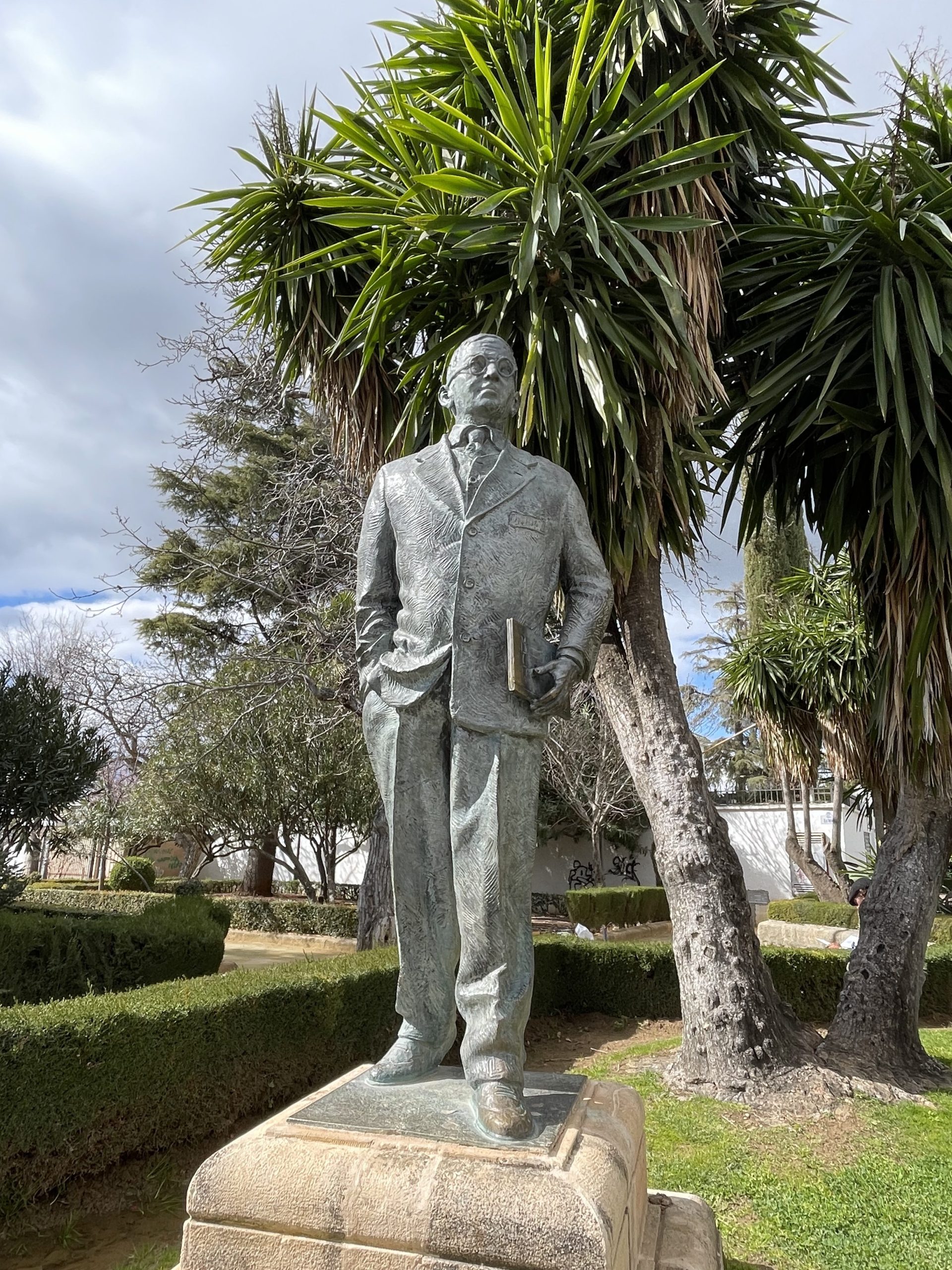
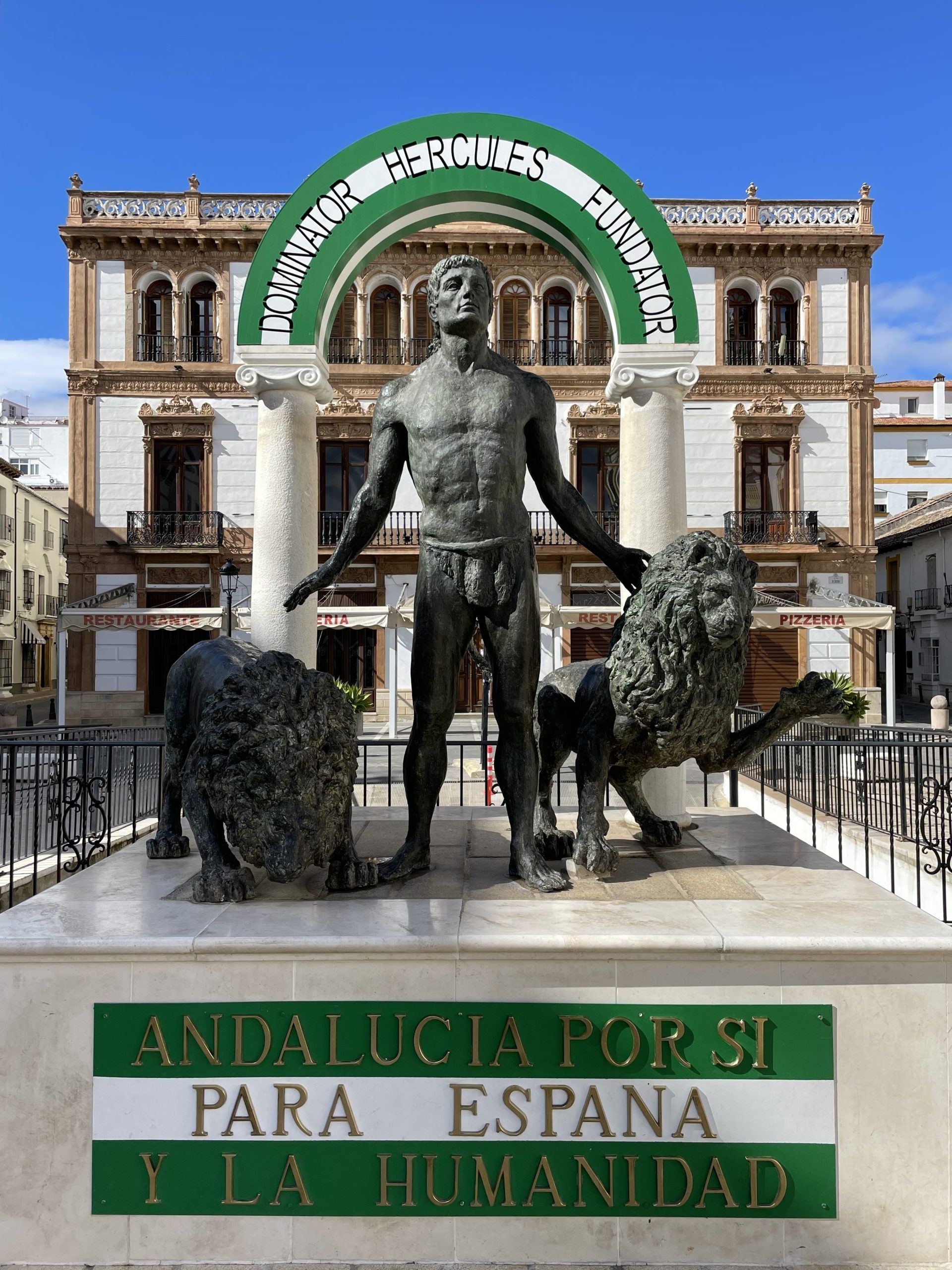
Despite its Civil War associations, the views out and beyond Ronda were breathtaking, even on the very cold day when we visited.
